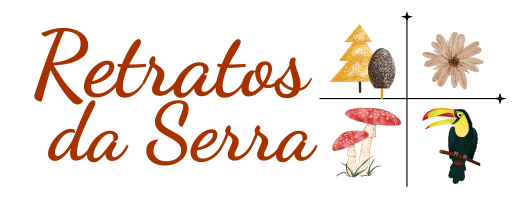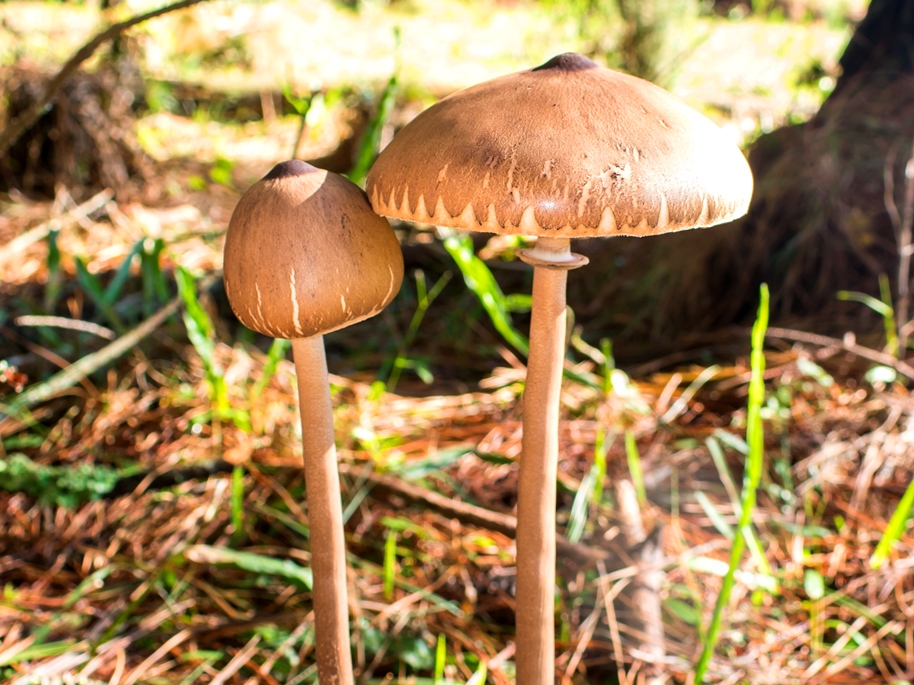Beautiful big mushrooms that look like umbrellas growing out of the ground! They are of the species Macrolepiota capelariae, being “related” to the Parasol mushroom, Macrolepiota procera.
I found this species a few times in 2023 in the woods on our land – at the time I didn’t know it was this species, but after I started using iNaturalist I was able to identify them, mainly with the help of mycologist Denis Zabin.
And this year (2024) I started finding them again at the same time (mid-March), this time on the edge of the forest on our land. I found it surprising that they had “sprouted” at a time when there was a heat wave and super dry weather here.
One was young, looking like a closed umbrella, and the other was already older, and it seemed that it had already lost the ring that is characteristic of the species. They were quite far from each other (photos below).
After that, I found many others in the interior of the native forest (Araucaria moist forest, part of the Atlantic forest) and also in pine (Pinus sp.) plantations, which are not native from here.
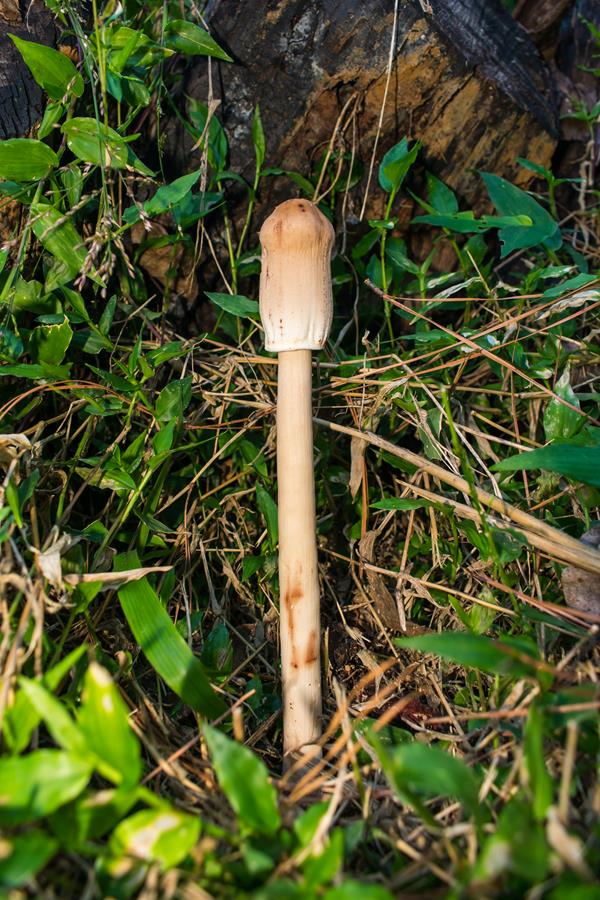
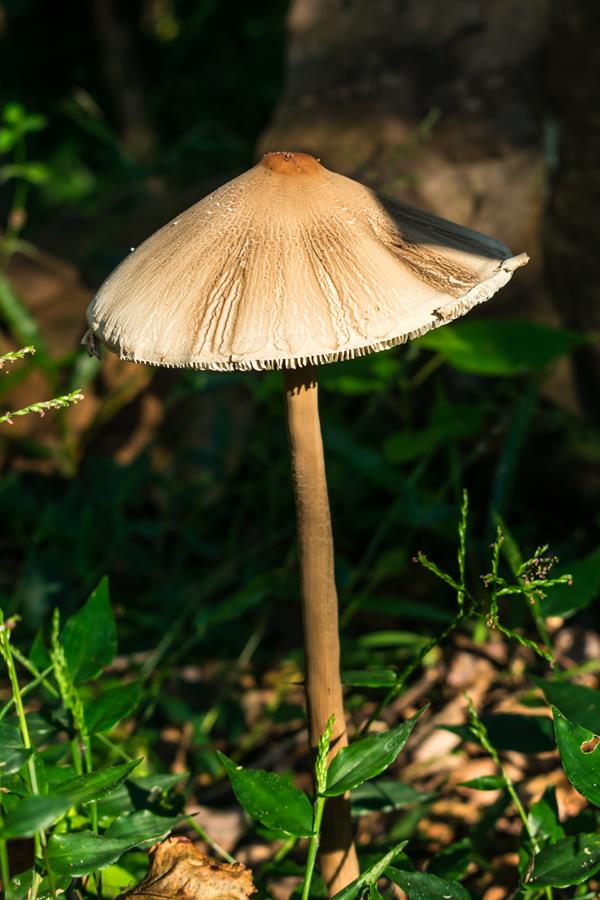
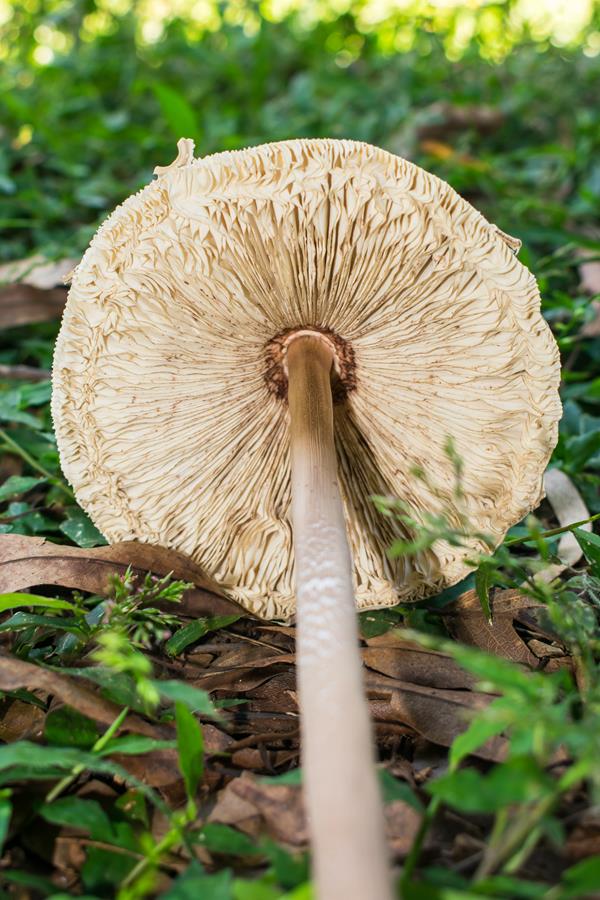
How to identify a Macrolepiota capelariae mushroom
They are generally quite large, usually can reach about 30 cm tall and with a cap diameter of 10 to 15 cm. The hymenophore (underside) is white and has lamellae (gills).
They have a ring on the stipe (“stem” of the mushroom), and the surface of the cap does not have scales, but rather gradually cracks, forming very fine striations that go from the center to the edge.
They have a brown tone, which can sometimes be very light or sometimes more orange. Around here in the Serra Gaucha region (mountains in the South of Brazil) they appear more in the end of summer and during the fall. They can grow inside and on the edges of native forests, but they also occur in pine forests.
I got these identification tips from mycologist Cristiano Coelho Nascimento, a researcher at iFungilab.
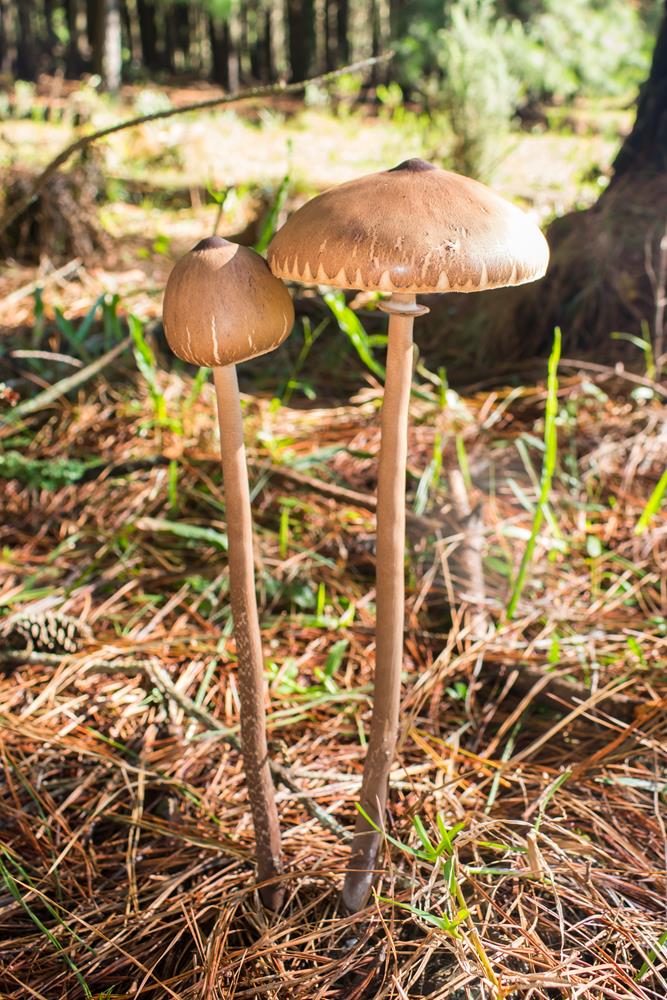
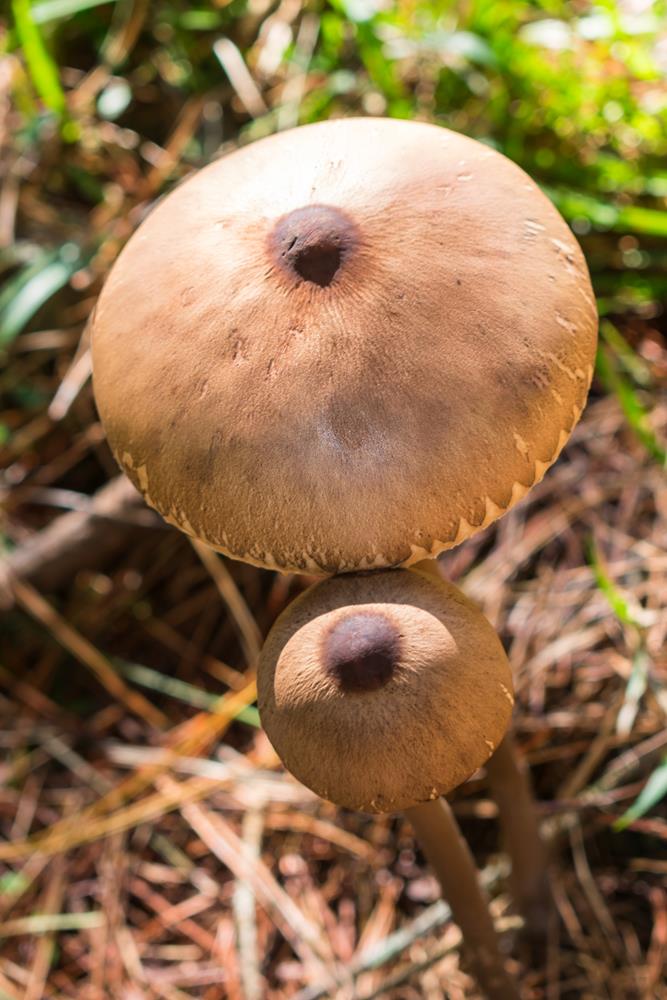
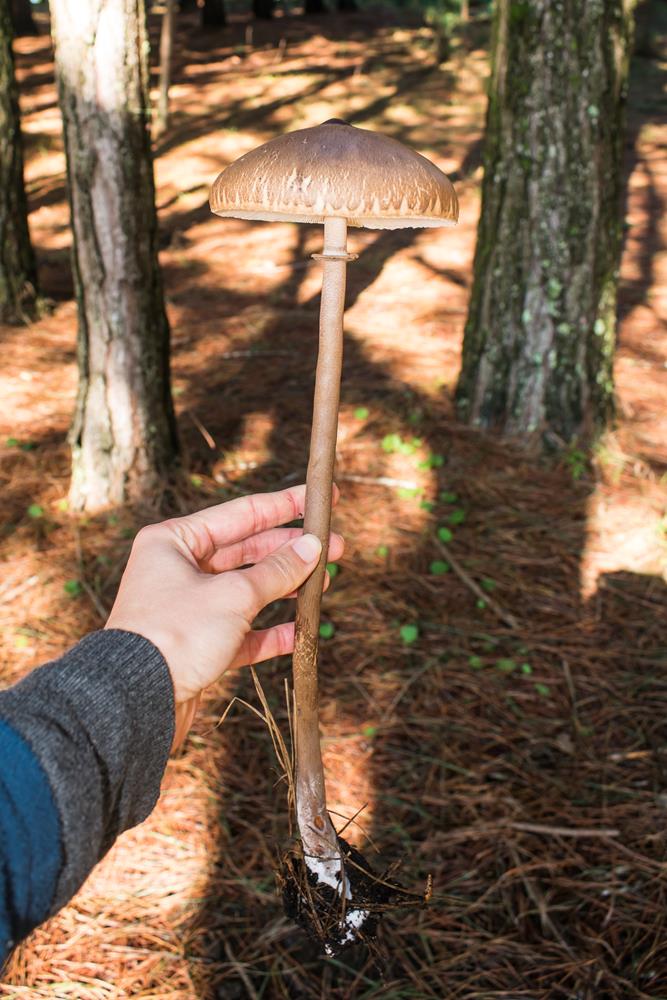
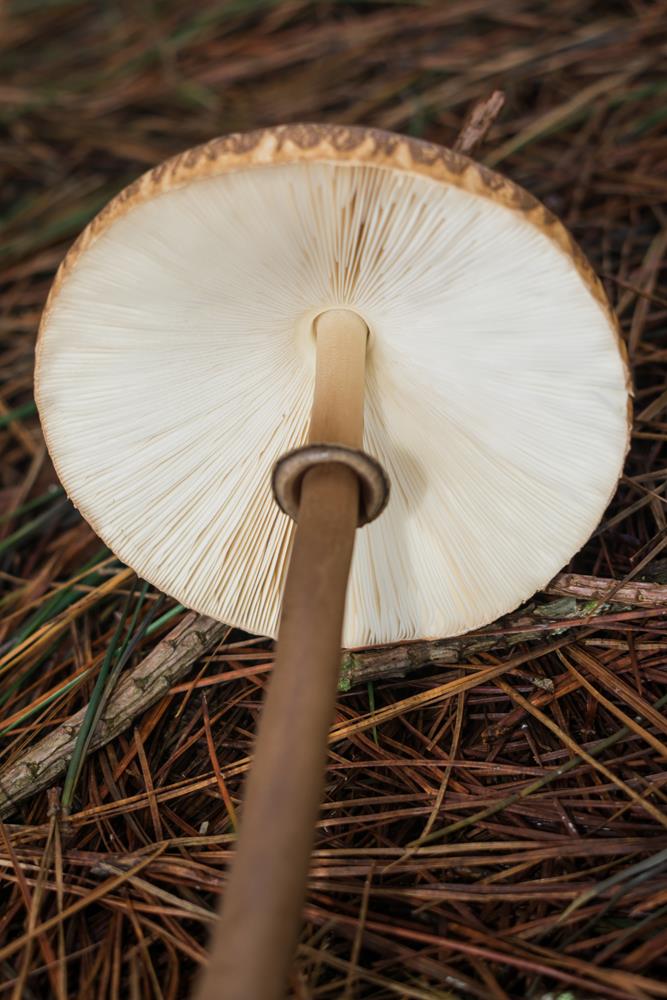
It is an edible mushroom, like many others of this genus (such as Macrolepiota bonaerensis, which I have also found a lot of around here). However, I have not tried it yet, as I only recently managed to identify it reliably, so I have not yet collected any to try.
Another factor is that usually when I find this genus of mushrooms, they are either too young or too old. I have only found a few specimens that were in the prime of their life and ready to go in the frying pan, lol. They have a very short shelf life from what I have seen. So I am still curious to try them!
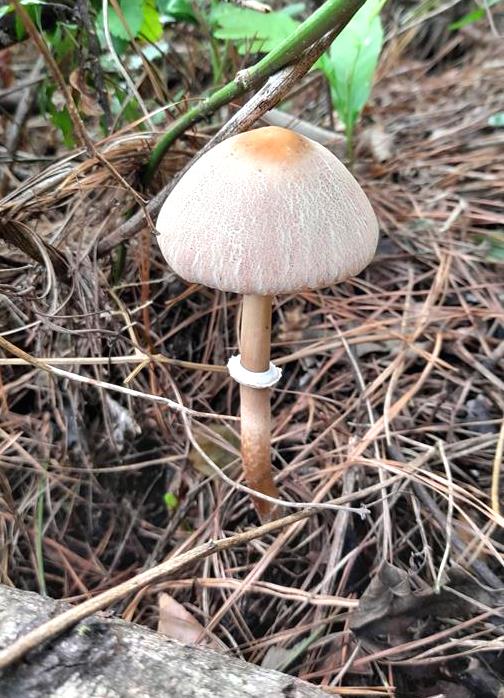
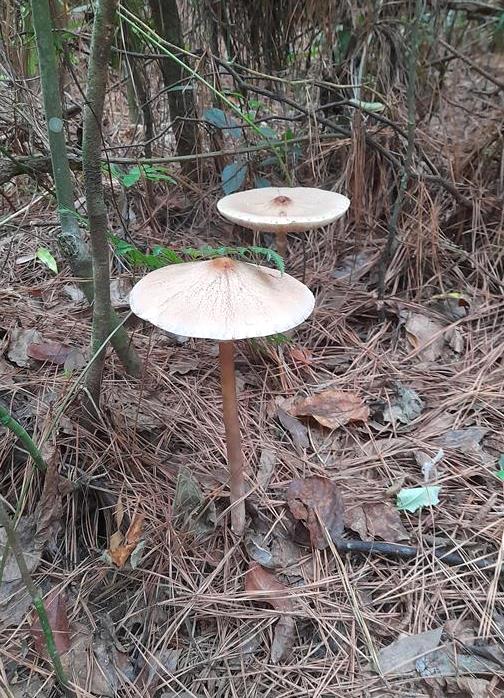
While searching the internet, I discovered that this is a new species of Macrolepiota that was described in December 2022 here in Brazil by iFungilab, based on morphological and molecular evidence.
It has been recorded in the Brazilian Atlantic Forest and also in Argentina and Mexico. The name of the species is a tribute to Marina Capelari, an important researcher in the study of mushrooms in Brazil. It is always impressive to come across one of these beautiful giants!
⚠ Remember to never eat wild mushrooms without proper identification.
📸 Pictures made in São Francisco de Paula, Rio Grande do Sul (Serra Gaúcha, South of Brazil).
